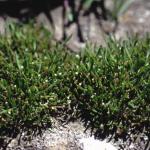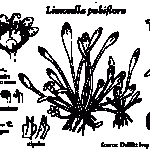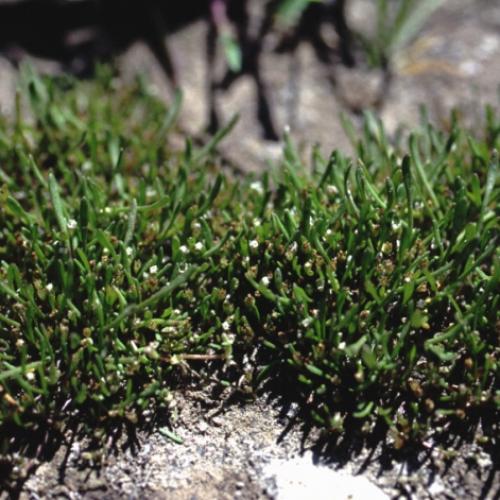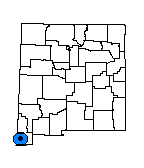Description
Annual; possibly stoloniferous; glabrous (or nearly so); leaves 1-6 cm long, 3-5 mm wide, the elongated petioles widening to oblanceolate, entire, slightly fleshy blades; flowers on slender peduncles; calyx 3-3.5 mm long, glabrous, the lobes ovate-acute, about 1 mm long; corolla whitish, 2.5 mm long, throat tubular-campanulate, lobes about 0.8 mm long, obtuse, finely pubescent within; style 0.6 mm long, curved; stigma capitate; capsule 2-celled, 3.5-4 mm long, globose-ovoid; seeds many, cross-ribbed, 0.4 mm long, little longer than wide, grayish-brown, the ridges sharp. Flowers May to July.
Similar Species
This plant is probably closely related to Limosella aquatica, and perhaps deserves to be included in that widespread species. The primary difference between the two is the presence of fine but evident pubescence on the inner surfaces of the corolla lobes of L. pubiflora. Other putative differences are the styles (less than 0.5 mm long in L. aquatica versus about 0.6 mm long in L. pubiflora) and the seeds (brown and several times longer than wide in L. aquatica versus grayish-brown and little longer than wide in L. pubiflora).
Distribution
New Mexico, Hidalgo County; adjacent Arizona, Cochise County.
Habitat
Muddy edges of ponds and perhaps streams; 1,500-2,000 m (5,000-6,500 ft).
Conservation Considerations
Natural cienega (wet meadow) habitats within the range of this species have been mostly eliminated during the last century. Current New Mexico populations occur primarily at the edges of cattle tanks (ponds) where they do not appear to suffer. Further lowering of water tables or the draining of tanks and ponds could have serious effects.
Important Literature
Kearney, T.H. and R.H. Peebles. 1960. Arizona flora, 2nd edition with supplement. University of California Press, Berkeley.
*Pennell, F.W. 1940. New species of Scrophulariaceae from Arizona. Notulae Naturae of The Academy of Natural Science of Philadelphia 43:7.
Phillips, III, A.M., B.G. Phillips and N. Brian. 1982. Status report, Limosella pubiflora. For U.S. Fish and Wildlife Service, Albuquerque, New Mexico.




